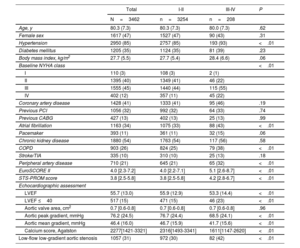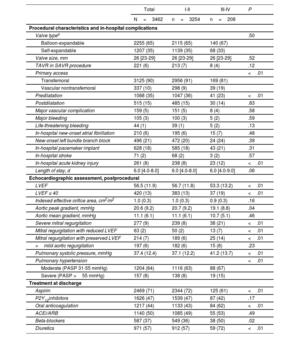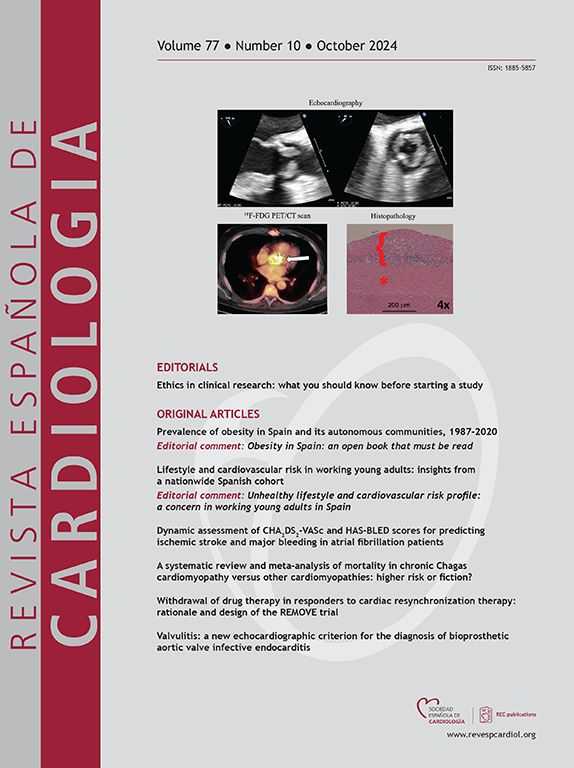
There are scarce data on the factors associated with impaired functional status after transcatheter aortic valve replacement (TAVR) and its clinical impact. This study aimed to determine the incidence, predictors, and prognostic implications of impaired functional class (NYHA class III-IV) following TAVR.
MethodsThis multicenter study included 3462 transarterial TAVR patients receiving newer generation devices. The patients were compared according to their NYHA class at 1 month of follow-up (NYHA I-II vs NYHA III-IV). A multivariate logistic regression was performed to identify the predictors of 30-day NYHA class III-IV. Patient survival was compared with the Kaplan-Meier method and factors associated with decreased survival were identified with Cox regression analysis.
ResultsThe mean age of the study population was 80.3±7.3 years, with 47% of women, and a median Society of Thoracic Surgeons score of 3.8% [IQR, 2.5-5.8]. A total of 208 patients (6%) were in NYHA class III-IV 1 month after TAVR. Predictors of 30-day NYHA class III-IV were baseline NYHA class III-IV (OR, 1.76; 95%CI, 1.08-2.89; P=.02), chronic pulmonary obstructive disease (OR, 1.80; 95%CI, 1.13-2.83; P=.01), and post-TAVR severe mitral regurgitation (OR, 2.00; 95%CI, 1.21-3.31; P<.01). Patients in NYHA class III-IV 1 month after TAVR were at higher risk of death (HR, 3.68; 95%CI, 2.39-5.70; P<.01) and heart failure-related hospitalization (HR, 6.00; 95%CI, 3.76-9.60; P<.01) at 1-year follow-up.
ConclusionsUp to 6% of contemporary TAVR patients exhibited an impaired functional status following TAVR. Worse baseline NYHA class, chronic pulmonary obstructive disease, and severe mitral regurgitation predicted 30-day NYHA class III/IV, and this determined a higher risk of mortality and heart failure hospitalization at 1-year follow-up. Further studies on the prevention and treatment optimization of patients with impaired functional status after TAVR are needed.
Keywords
Identify yourself
Not yet a subscriber to the journal?
Purchase access to the article
By purchasing the article, the PDF of the same can be downloaded
Price: 19,34 €
Phone for incidents
Monday to Friday from 9am to 6pm (GMT+1) except for the months of July and August, which will be from 9am to 3pm









